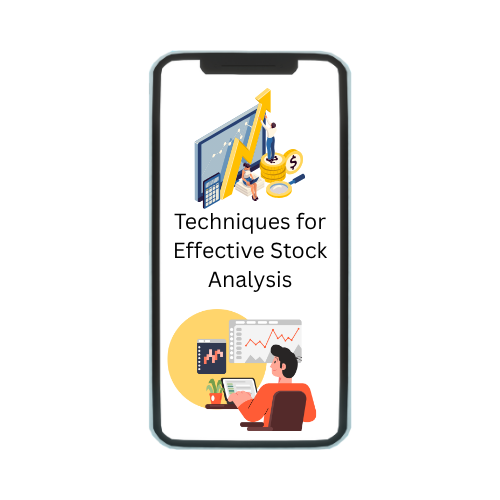“Only buy something that you would be perfectly happy to hold if the market shut down for 10 years.”- Warren Buffett
We have often heard about the concept Futures and Options. But investors who have never traded through F&O might not understand what the concept all about is and what strategies should be adopted to trade in Futures and Options.
So here we will discuss about Futures, Options, types and Long Short Strategies in F & O.
What are Futures?
Futures are known as a contract between buyer and seller to buy or sell any underlying stock or other asset at a pre-determined price on a specific date. It is part of Derivative market. The buyer and the seller both have obligations to buy or sell the asset at the predetermined prices regardless of the current market conditions. Now the underlying assets could be physical commodities or financial instruments. Futures can be used as hedging tool.
What are Options?
An Option contract is the right, but not an obligation for the buyer to buy or sell the underlying asset at a certain price on or prior to fixed date. Here the buyer has the choice to execute the transaction or not.
Types of Futures
Futures are basically of two types
- Financial Futures : Stock Futures, Currency Futures, Interest Rate Futures, Index Futures
- Physical Futures : Commodity Futures, Energy Futures, Metal Futures
Types of Options
Options are also of Two Types
- Call Option: Where the buyer has the right but not the obligation to buy a specified quantity of underlying asset.
- Put Option: Where the buyer has the right but not the obligation to sell specified quantity of an underlying asset.
Now that we know the basic concepts let us understand
What is Futures and Options (F &O Trading) ?
Future and Options are two derivative instruments where the traders buy or sell an asset at a predetermined price. Options and Futures are contracts. So it could be 1 month, 2 months and 3 months. All F & O contracts expire on last Thursday of the month. Futures trade at a price predetermined which is premium to the spot price owing to the time value.
Trading in options is little complicated as there are trade in premiums. So there will be different strikes for the same stock for put option and call option.
Meaning of Long and Short Strategy
Long and short strategy is an investment strategy that takes long positions in the stocks that are expected to appreciate and short positions in stocks that might go down.
“ Long” Positions – Equities anticipated to increase in value are purchased to turn a profit from the upside.
“Short” Positions -Profits are earned from the declines in share or stock price as the stocks are expected to underperform.
Let us Understand How Long and Short Strategy works in case of Futures and Options strategy
- Long Futures/Options
Let us assume there is a trader named Mr. Ajay. He anticipates that certain commodity price or certain stock price is going to rise. Despite all volatility in the market Mr. Ajay expects price rise. Mr. Ajay buys a futures contract that gives him the right to buy at a price which is lower than the market price and he anticipates price rise.
- Short Futures/ Options
Suppose Mr. Ajay anticipates a decrease in the stock price or commodity. He decided to buy a future contract that will allow him to sell his stock at a price which will be more than the market price. Now if the market performs well and prices go up instead of going down then Mr. Ajay will incur loss as he is obliged to sell his stock as per the price determined and if the prices go down Mr. Ajay can earn profit better than the market price.
- Synthetic Long Futures and Options
Now Mr. Ajay has one short put for a lower price and one short call for a higher price. He wants to convert these two to long futures/options in anticipation of a price increase. Mr. Ajay achieves this by purchasing two call options. The price of the call option will be higher than the put option which gives him the opportunity to earn while also guarding them against a potential price increase.
The newly purchased call options liquidates the short call that the trader is already holding. He is now left with one long call and one short put at different strike prices.
- Synthetic Short Futures and Options
Here Mr. Ajay will play the reverse strategy in a situation where he anticipates a price drop after purchasing the contracts. In this case Mr. Ajay holds a long put for a lower price and long call for a higher price and wants to convert these to short, here he can purchase two put options where one would cancel out one of the existing long put. Mr. Ajay is left with one long call and one short put and he has the potential to earn from the pricing difference between the two.
- Long Call
Mr. Ajay predicts an imminent large rally in future prices. In such a case, he decides to buy a call that allows him to buy at a lower price than the high price that he anticipates the market would show soon. Here Mr. Ajay will also pay attention to paying low premium amount for the contract.
- Short Call
Right After the above move Mr. Ajay will play short call move. The trader expects the underlying assets and securities to consolidate and fall. Meanwhile the premiums on the contract are inflated on account of high activity. Mr. Ajay sells his call contract at this time, taking his home earnings in the way of difference in premium.
- Long Put
After observing all rallies in the market in certain stocks or commodities, Mr. Ajay is completely sure that the prices are due for correction. He can see that the prices are inflated but is not sure when the price consolidation will actually come to pass. He buys a long put option for a price that might be lower than the market price but is definitely higher than the market price he anticipates for the stock or commodity in question.
- Short Put
Here Mr. Ajay has held his put option for a period and prices are not showing any chances of coming down. He wants to avoid a situation where he will have to sell his asset less than the market price. Meanwhile premiums on the contracts will be higher due to high volatility. Here Mr. Ajay can sell his put option at this point so that at least he gains on the premium.
Conclusion
Stock markets are always subject to market risk. Investors should always be vigilant and trade with the amount which he can keep aside other than for his routine expenses. There are lots of futures and options strategies that you can try. One should understand the market dynamics and factors that are effecting stock prices which essential factor in trading. It is always ideal to have a steady income, and investors should always access their risk taking capacity before doing any kind of investments.




